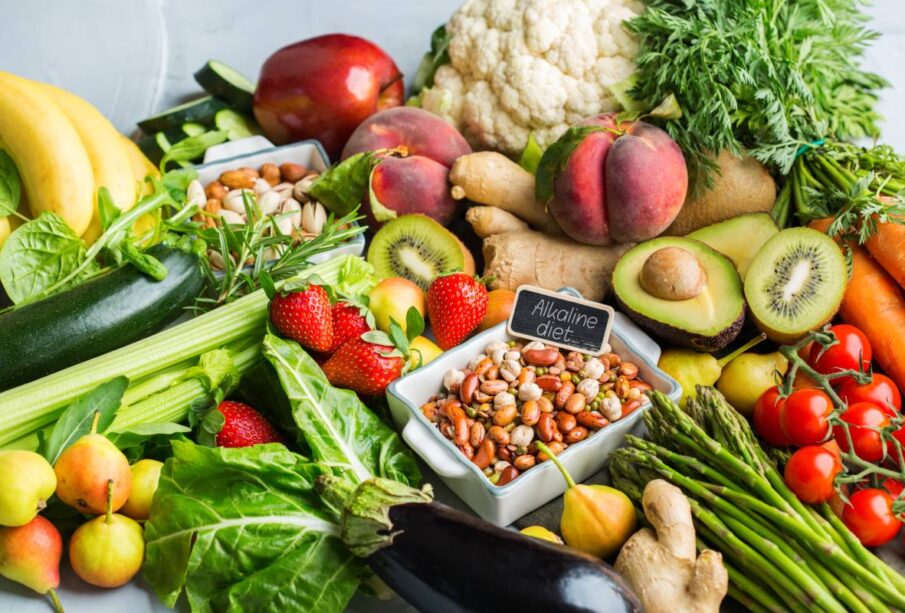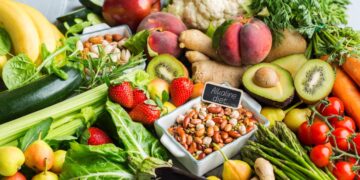What Is Whole Food? Health Benefits, Examples & How to Start Eating Whole Foods Naturally

In today’s world, where processed and convenience foods are everywhere, more and more people are making the conscious decision to return to basics — by eating whole foods. This dietary trend is particularly popular among health-conscious individuals who want to nourish their bodies from within.
But what exactly is “whole food”? Why is it gaining so much attention, and how can you incorporate it into your daily routine? In this article, we’ll explore everything you need to know about whole foods, their health benefits, examples of what to eat, and how to make the transition smoothly.
What Are Whole Foods?
Whole foods are foods that are as close to their natural state as possible. They are either unprocessed or minimally processed, meaning they haven’t been altered significantly from the way they appear in nature. These foods are free from artificial additives, preservatives, colourings, and trans fats commonly found in processed food products.
Examples of whole foods include:
-
Fresh vegetables and fruits
-
Whole grains like brown rice, quinoa, and oats
-
Legumes and beans
-
Nuts and seeds
-
Natural sources of protein like eggs, fish, and lean meats that are minimally processed
-
Plant-based proteins like tofu and tempeh (as long as they are minimally processed)
Unlike processed foods, whole foods retain their natural nutrients, fiber, and health-boosting properties — making them an ideal choice for anyone looking to improve their overall well-being.
The Health Benefits of Whole Food Eating
Switching to a whole food diet can bring about a wide range of health improvements, both physically and mentally. Here are some of the top benefits you can expect:
1. Complete Nutrition
Whole foods are naturally rich in vitamins, minerals, antioxidants, and dietary fibre. They provide your body with essential nutrients it needs to function optimally without the unnecessary additives and chemicals.
2. Reduced Risk of Chronic Diseases
A diet based on whole foods can significantly lower your risk of chronic illnesses such as:
-
Type 2 diabetes
-
Heart disease
-
High blood pressure
-
Obesity
-
Certain types of cancer
Studies consistently show that populations that consume diets rich in whole foods tend to have lower incidences of these diseases.
3. Weight Management
Whole foods tend to be high in fibre, which helps you feel full for longer periods and reduces the urge to snack unnecessarily. This makes it easier to control your calorie intake and manage your weight more effectively — without counting every bite.
4. Improved Digestion
A fibre-rich whole food diet supports healthy digestion and promotes regular bowel movements. It also helps detox your body by flushing out residual chemicals and additives commonly found in processed foods.
5. Clearer Skin and Sharper Mind
Many people report brighter skin and better mental clarity after switching to whole foods. That’s likely due to the absence of chemical additives and the increased intake of antioxidants and essential fatty acids.
6. Mental and Emotional Well-being
Eating clean, natural food not only benefits your body — it also lifts your spirits. Minimally seasoned meals made with whole foods are easier for your digestive system to handle, leaving you feeling less sluggish and more energetic. As your gut health improves, so does your mood, focus, and concentration.
Whole Food Examples to Get You Started
Here are some staple whole foods you can start adding to your grocery list today:
🌱 Fruits and Vegetables
-
Apples, bananas, berries, oranges, and mangoes
-
Leafy greens like spinach, kale, and lettuce
-
Carrots, bell peppers, cucumbers, and sweet potatoes
🥜 Nuts and Seeds
-
Almonds, walnuts, cashews
-
Chia seeds, flaxseeds, pumpkin seeds
🌾 Whole Grains
-
Brown rice, quinoa, oats
-
Barley, bulgur, farro
🥚 Natural Protein Sources
-
Free-range eggs
-
Fresh fish like salmon or sardines
-
Lean meats without preservatives
🫘 Legumes
-
Chickpeas, black beans, lentils
-
Soybeans (edamame) and green peas
When selecting foods, always aim for organic or naturally sourced options when possible — especially for items like fruits, vegetables, and animal products.
Things to Consider When Transitioning to Whole Food
Although switching to a whole food diet comes with a host of benefits, doing it too quickly can lead to temporary discomfort or overwhelm. Here’s what to keep in mind:
⚠️ Digestive Adjustment
Your body might not be used to the higher fibre content found in whole foods. If you switch too fast, you might experience bloating, gas, or changes in bowel habits. Start slowly by adding one or two whole food items per day and gradually increasing from there.
⚠️ Taste Preferences
Whole foods may taste more subtle than processed ones, which are often loaded with salt, sugar, and flavour enhancers. Your taste buds will need time to adjust. Be patient — over time, you’ll begin to appreciate the natural flavours and textures of real food.
⚠️ Meal Preparation Time
Whole foods often require more preparation than processed foods. Plan ahead by preparing meals in bulk, chopping vegetables in advance, or cooking batches of grains or legumes that you can store in the fridge for later.
⚠️ Cost Consideration
Eating whole foods can sometimes seem more expensive at first, especially if you’re shopping organic. However, buying in bulk, choosing seasonal produce, and minimising takeout or junk food can help balance your budget.
Practical Tips for Embracing the Whole Food Lifestyle
If you’re ready to embrace the whole food approach, here are some practical steps you can take:
-
Start with One Meal a Day
Make breakfast or lunch your “whole food” meal. For example, oatmeal topped with fresh fruit and nuts is a nutritious and filling start to your day. -
Shop the Perimeter of the Grocery Store
Most whole foods are found around the edges of the supermarket — where the fresh produce, meat, dairy, and grains are kept. -
Read Labels Carefully
If you do buy packaged items, choose ones with the shortest ingredient lists and no artificial additives. -
Cook at Home More Often
Home-cooked meals give you full control over what goes into your food. Try new recipes using seasonal whole food ingredients. -
Snack Smart
Replace processed snacks with options like fruit, trail mix, or raw veggies with hummus. -
Stay Hydrated Naturally
Drink water, herbal teas, or homemade smoothies instead of sugary sodas or flavoured drinks.
Whole Food: More Than Just a Diet — It’s a Lifestyle
Choosing whole foods isn’t just about eating better; it’s about living better. It’s a lifestyle shift that supports sustainable health, longevity, and peace of mind. As we become more aware of the links between diet and disease, the benefits of eating foods in their most natural state are hard to ignore.
By gradually cutting down on processed food and embracing whole food choices, you can make lasting improvements to your health — inside and out. Whether you want to feel more energetic, manage your weight, or prevent chronic illness, whole foods can be your ally in reaching those goals.
Conclusion
In a world filled with fast food, convenience snacks, and ultra-processed meals, whole foods offer a refreshing and nourishing alternative. They are not just a dietary option, but a return to eating the way nature intended — simply, purely, and mindfully.
Start small, be consistent, and let your body and mind experience the benefits of eating real food. Over time, you’ll likely find that not only does your health improve, but your relationship with food becomes more joyful and intentional.













